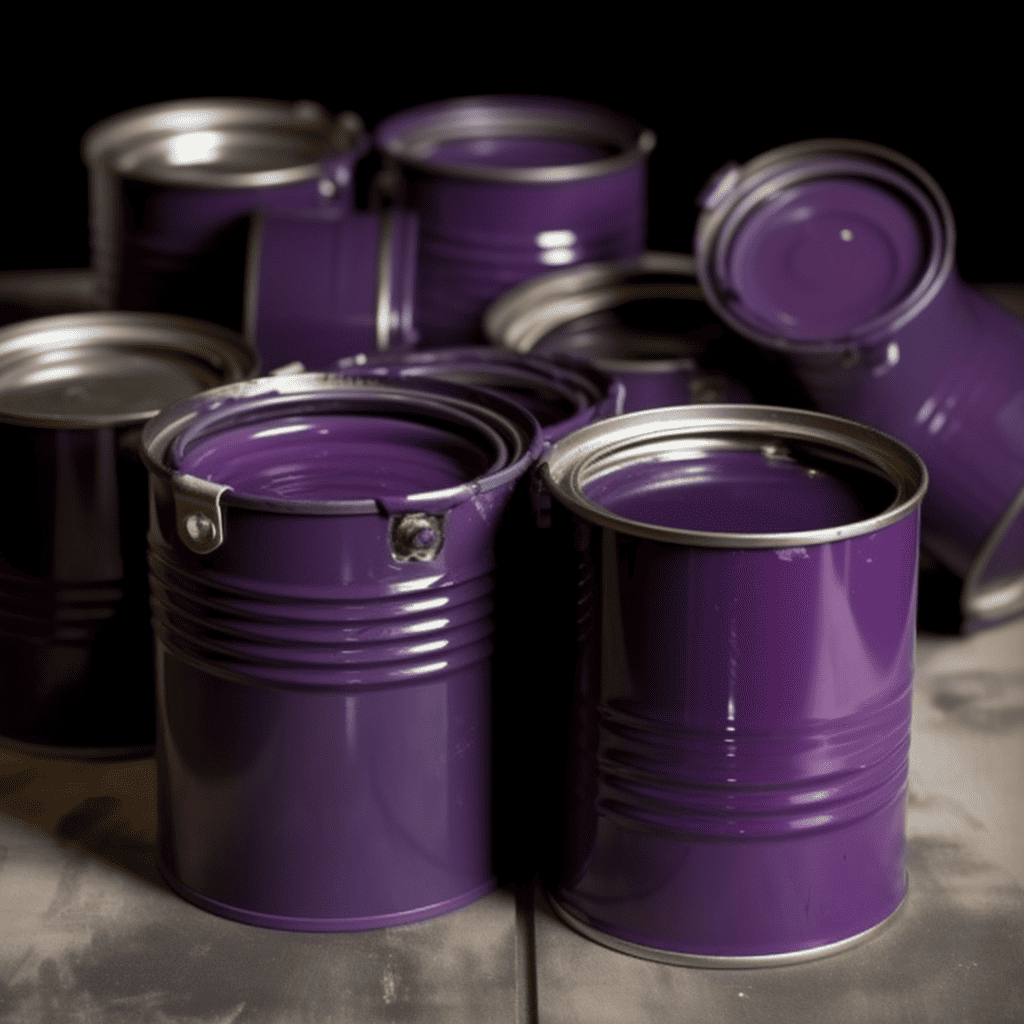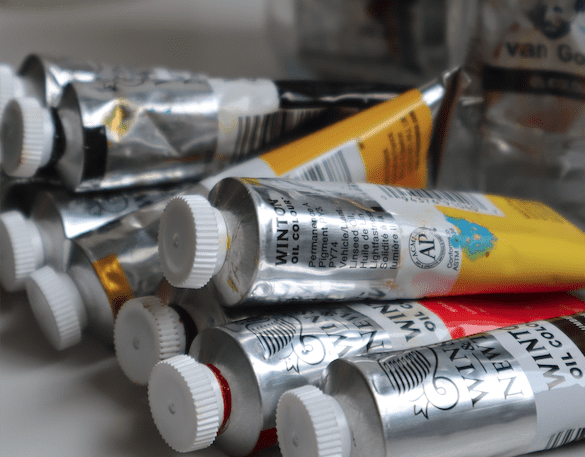Reducing Waste: Tips and Tricks for Safely Disposing of Acrylic Paints
Hey there, acrylic paint fans! Looking for the best way to dispose of your used cans and brushes? Don’t worry – I’ve got you covered. As an expert in acrylic paint disposal, I know all the tricks of the trade when it comes to getting rid of this stuff without causing any damage to our planet. In this article, I’ll be walking you through all my top tips for disposing of acrylic paints responsibly so that we can keep ourselves, and Mother Nature safe. So let’s get started on making sure those brushstrokes don't have any harmful consequences!
Overview Of Acrylic Paint
Acrylic paint is a water-based medium commonly used by artists and hobbyists alike. It's composed of pigments suspended in an acrylic polymer emulsion, making it a popular choice for its ability to maintain vibrant colors under different viscosity levels. Acrylic paints are also known for their durability and flexibility when dry, which makes them ideal for outdoor projects. Though many acrylics on the market claim to be non-toxic, some may contain toxic chemicals that can pose serious health risks if inhaled or ingested, so safety considerations should be taken into account before using any type of paint. With this knowledge, let us explore what we need to consider when disposing of acrylic paints properly.
Safety Considerations

Once you've become acquainted with the wonders of acrylic paint, it's time to think about how – and when – to dispose of this hazardous material. As an expert in acrylic paint disposal, I'm here to tell you that proper handling is key!
To start, wearing gloves is a must as chemical hazards can arise if not taken seriously. Also, ventilation requirements should be met while using your paints (or disposing of them) as well as protective clothing and eye protection. These steps are non-negotiable when dealing with any kind of hazardous material like acrylics.
Well now that safety has been established, let's move on to the actual disposal process. You'll need to consider local regulations for safe disposal options such as taking them to a waste facility or recycling center, ultimately ensuring these materials don't end up somewhere they shouldn't!
Disposal Options
When it comes to disposing of acrylic paint, there are several options available. First and foremost, you should never pour the paint down a drain or into any body of water as this can be very harmful to both animals and plants in the area. Instead, let the excess paint dry before discarding it according to local disposal guidelines.
Paint recycling is another way to dispose of unwanted acrylic paints responsibly. Many municipalities offer special programs for collecting used colors so that they can be recycled rather than sent off to landfills. These programs often require an up-front fee which helps cover the cost of processing and transporting the materials.
It's also important to note that not all types of paints may qualify for these programs, so make sure to check with your local government first.
Finally, if none of these options are available in your area, consider reusing or donating your unwanted acrylic paints instead. Numerous art organizations around the globe accept donations of gently used supplies like acrylics from individuals and businesses alike. Donating is a great way to give back while helping others get creative! With that said, transitioning into the subsequent section about 'reusing and recycling acrylic paint' could help further reduce waste and ensure proper disposal methods are taken seriously.
Reusing And Recycling Acrylic Paint

While disposing of acrylic paint may seem like an overwhelming task, there are a variety of methods available to make the process easier and more sustainable. With that in mind, let's dive into reusing and recycling acrylic paint! Inundated with possibilities, it can be hard to know where to start - but never fear! Utilizing these safe disposal methods will help you find the perfect solution for your old cans of acrylics.
Reusing leftover acrylic paint is perhaps the most obvious way to make sure it doesn't go to waste. You could use it for touch-ups or future art projects; if stored correctly (in airtight containers away from direct sunlight), many types of acrylic paints can last up to 10 years! Additionally, some cities offer free workshops on how best to reuse leftover supplies – take advantage of this great resource!
Recycling centers often accept unwanted cans of latex and water-based paints. Check online or contact local facilities near you for specifics on what they'll accept – most likely they'll require that all lids be removed before drop off.
Alternatively, look out for hazardous waste collection days in your area – typically run by county governments – which collect items such as aerosols, solvents, and other hazardous materials including paint.
These events provide a safe way to get rid of excess supplies while also protecting our environment against potential pollutants.
Now that we've discussed two main options for reusing/recycling acrylic paint, it's important to remember that local regulations can vary depending on location. Always check with your municipality before disposing of any type of material down the drain or dumping them outside – even if it seems harmless! Doing so not only helps protect public health but keeps our planet clean too. Keeping these tips in mind should help ensure safe disposal when dealing with unused cans of acrylic paints.
Local Regulations For Disposal

When it comes to disposing of acrylic paint, local regulations must be followed. Artists and craftspeople need to know their disposal rules as each locality has its painting waste regulations in place. Before getting rid of any leftover or unwanted acrylic paints, one should consult with the local hazardous waste disposal guidelines.
In many cases, the best way to handle the paint is through a household hazardous waste collection program that may be offered by your county or municipality. These programs are designed specifically for collecting and safely disposing of items such as latex-based paints and other chemicals used around the home. If there isn't a collection program available near you then contact your local sanitation department for more information on how they recommend handling paint disposal regulations.
Before taking any action, however, always check with your city or state government agencies first to see if there are any specific requirements when it comes to properly disposing of acrylic paints and other painting supplies. Doing so can help keep our environment safe while also ensuring compliance with all applicable paint disposal regulations. With this knowledge in hand, I'm ready to move on to discussing cleaning up after painting projects!
Cleaning Up After Painting
Now that you've familiarized yourself with the local regulations for disposal, it's time to move on to cleaning up after painting. Before starting any cleanup process, ensure you have all your necessary supplies, such as protective clothing, gloves, and goggles. If there are paint spills or splatters on surfaces, use a damp cloth or paper towel to remove them while they're still wet. Once they've dried, try using a putty knife to scrape off any excess paint.
If you need to dispose of acrylic paint in containers, make sure the lids are tightly sealed before putting them into a garbage bag or bin. These containers shouldn't leak!
Depending on where you live and what type of hazardous waste facilities exist nearby, you may be able to take advantage of their services for disposing of leftover paint safely and responsibly.
No matter what method of disposal you choose for your acrylic paint, always remember to follow safety protocols by wearing protective gear when handling any materials containing harmful chemicals. Doing so can help reduce the risk of injuries or illnesses caused by toxic fumes and vapors associated with certain types of paints. Taking this extra precaution will ensure that everyone involved stays safe during the entire process!
Frequently Asked Questions
When disposing of acrylic paint, it’s important to consider the environmental implications. Acrylic paint is a hazardous material that can cause damage to our natural environment if not disposed of correctly. It’s vital to understand the disposal implications and potential environmental impact before getting rid of any type of acrylic paint.
Acrylic paint contains potentially dangerous chemicals that are harmful when entering water sources or soil. To avoid causing harm to the environment, proper disposal is essential. Different methods exist for properly disposing of acrylic paint depending on your local regulations and whether you have empty cans or used materials. Empty containers should be taken to a hazardous waste facility while paints mixed with other liquids should be dried out completely before being thrown away in an appropriate receptacle designated for household waste.
No matter what method you use for disposing of acrylic paint, the most important thing is ensuring that no trace of the chemical compounds make their way into our drinking water or contaminate nearby land areas. If done incorrectly, this could lead to serious health problems as well as long-term ecological issues such as soil contamination and decreased biodiversity in affected areas. Therefore, it is necessary to take extra precautions when dealing with acrylic paint disposal and its potential environmental implications.
When it comes to disposing of acrylic paint, there are a few special instructions that need to be followed. As an acrylic paint disposal expert, I’m here to provide you with all the information you need to safely dispose of your leftover paints.
To start, store any leftovers and unused paint properly in their original container after use. This will help prevent spills or leakage during disposal which can lead to environmental contamination. Additionally, if possible try to use up as much of the paint as possible since many local waste management organizations do not accept partially used containers for disposal.
If the amount of leftover or unused paint is too large for just one person’s usage, consider donating it. You can donate your unwanted paints to organizations like Habitat for Humanity so they can help people who may require acrylic paints for their projects and also reduce waste from going into landfills. Here is some advice on how best to do this:
Make sure the recipient knows exactly what type of product you are giving them (acrylic).
Let the organization know about any warnings or precautions that come with using a particular type of paint during the handling and application process.
Provide detailed information on expiration dates, storage requirements, and shelf life expectancy when donating your paints.
Donate only those products that have not been opened previously and are still sealed in their original packaging.
Finally, if no other solutions seem available then contact your local government-run hazardous waste collection center or household hazardous waste collection facility for more information regarding proper disposal methods for acrylic paints where you live. Some centers may even offer drop-off services or take-back programs depending on the situation – make sure to check out these options first!
Yes, acrylic paint can be diluted with water. This is one of the most effective ways to dispose of it without causing any damage to the environment or your health. For example, I recently had a client who wanted to properly and safely dispose of their acrylic paints after using them for an art project. We decided that diluting the paint with water was the best option as it prevents toxic fumes from entering the air, and ensures that no harmful chemicals are released into our waterways.
When diluting acrylic paint with water there are some important things to keep in mind: 1) Use only cold tap water when diluting acrylic paint – hot or boiling water will cause the paint to warp. 2) Start by adding small amounts of water at first so you don’t end up making your paint too thin. 3) Make sure all lumps have been completely broken down before disposal; otherwise, they could clog drains or sewers. 4) Be careful not to mix different types of paints while diluting – this could lead to serious chemical reactions if done improperly.
The process of diluting acrylic paints with water creates a safe solution that can then be disposed of easily without having any adverse effects on either you or the environment around you. As long as these steps are followed correctly, there shouldn’t be any problems when it comes time to get rid of your old cans of paint! It’s worth noting that although dilution may seem like an easy solution, improper techniques can create hazardous situations so make sure you always follow safety guidelines when disposing of acrylic paints in this way.
When it comes to acrylic paint toxicity, many questions need to be answered. Is acrylic paint toxic? It’s important to understand the safety risks and effects of exposure to this type of paint as well as how to properly dispose of it once you’re done using it.
Acrylic paints contain compounds called alkyd resin, which can be hazardous if inhaled or ingested in large amounts. Though the risk of acute poisoning is low, long-term exposure may irritate the skin or eyes. Additionally, small children and pregnant women should take extra precautions when handling acrylic paints due to possible toxins present in some formulations. It’s best to wear a respirator mask while painting with acrylics and always use them in a well-ventilated space away from food preparation areas.
To properly dispose of any leftover acrylic paint, follow local regulations on hazardous waste disposal; also make sure all containers are securely sealed before disposing of them so no one accidentally ingests any chemicals present inside the container. If you have any concerns about your specific situation, contact a professional for advice on proper disposal methods.
Keeping these tips in mind will ensure safe handling and disposal procedures for both you and the environment!
Storing leftover acrylic paint is a tricky business. To get it right, you need to understand the shelf life of your paints and how best to preserve them. As an acrylic paint disposal expert, I can offer some insights into safely storing these colors for future use.
Figuratively speaking, painting with acrylics is like writing in sand – if not properly stored and preserved, it will quickly fade away. Here’s what you need to know about preserving acrylic paint: 1. Clean off any excess from containers before putting lids on tight; 2. Store the container upside down so that air does not enter; 3. Keep out of direct sunlight or heat sources; 4. Label each color clearly so that you don’t forget which one is which!
By taking these simple steps when storing acrylic paint, you’ll ensure that your supplies last as long as possible – until they’re ready to be used again at a later date! Properly sealed and labeled containers should keep their vibrant colors for months on end. So go ahead and store those precious leftovers without worry; just remember to take care when handling them next time around!
Conclusion
The disposal of acrylic paint is an important environmental consideration that all artists must make. As you can see, there are many factors to consider when disposing of acrylic paint. While it may seem like a daunting task, with the right knowledge and preparation, managing your leftover paints safely and responsibly doesn’t have to be difficult.
Acrylic paint is not inherently toxic, but it does contain chemicals that should be managed carefully. Storing leftover paints properly will help ensure their longevity and prevent accidental spills or contamination of the environment. Diluting acrylics with water before disposal can also help reduce any negative impacts they might otherwise cause if left undiluted.
Ultimately, understanding how to dispose of acrylic paints responsibly will enable you to enjoy creating art without worrying about its potential impact on the environment. With some simple steps such as proper storage and dilution before disposal, you can guarantee that your creative processes remain both enjoyable and environmentally friendly.






